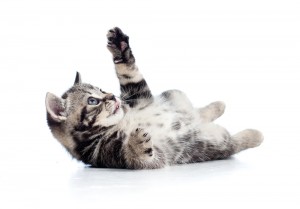Dealing With Aggression In Cats
INTRODUCTION
Bearing in mind their size, domestic cats can make dreadful enemies. Cats have five effective attack weapons, including mouth that can open widely equipped with sharp teeth, and four dexterous paws bearing needle-sharp claws. These weapons, combined with explosive speed and the limberness of a contortionist, can make restraining reluctant cats more difficult than herding these independent animals.
As every veterinarian knows, it is far better to avoid a cat’s anger than it is to confront it once the cat’s enraged. Therefore, the approach of nominal physical restraint and slow, placid handling is the best one to use when treating cats. If the cats temper has already reached its boiling point, it is best to give them time to settle down before continuing any therapy. However, sedatives or full physical restraint may be needed if it is important to continue immediately.
TYPES OF AGGRESSION
Types of aggression differ with varieties of species. Aggression can be described as maternal, irritable, territorial, sexual, predatory, fear-induced, and instrumental (as a way to achieve a goal). Classifications of aggression that have been more recently added to this list include pain-induced aggression, the always offensive petting-induced aggression, and idiopathic aggression (of unknown cause).
Another way of classifying aggression is into affective and predatory types. Affective, or emotional, aggression refers to a sudden mood change, and predatory aggression refers to the business of predation, i.e. procuring prey by hunting and killing, which is comparatively unemotional. There are also two types of affective aggression; defensive and offensive. Defensive aggression is in response to a threat, whether real or perceived, and is either entirely self-protective, or a combination of self-protective and maternal if a litter is involved. Offensive aggression indicates an animal lashing out at another animal, most likely unprovoked, in order to achieve some “selfish” goal.
BODY LANGUAGE FOR OFFENSIVE AGGRESSION
- Ears positioned sideways or forward
- Pupils slightly rounded or very thin
- Body stance with the shoulders lower than the rump giving a slanting-forward impression
- Eyes engaged on the target, slight side-to-side head motion
- Low pitched growl
- Tail tip swishing from side to side. Tail held horizontal or vertically down
BODY LANGUAGE FOR DEFENSIVE AGGRESSION
- Ears held flat against the head pointing backwards
- Widely dilated pupils
- Piloerection – hair on the entire cat will stand on end, puffing them up to make them appear larger
- Body stance is crouching or the back is arched
- Tail to the side or curved under
- Hissing and spitting
- Tense, unsheathed claws
BODY LANGUAGE FOR PREDATORY AGGRESSION
- No emotional changes besides extreme attentiveness
- Stalking/hunting behavior
- Body stance is crouching, leading to springing
- Gripping with claws and biting
Cats have always been considered lone, independent creatures, but it has newly been accepted that they can live socially and that some may become the “alpha” cats. In order to accomplish and hold this title, they must be physically strong and possess a willful personality. This is why aggression is a natural behavior for the cat and was required for survival of the cats’ wild ancestors.
The aforementioned type of aggression called “petting-induced” aggression is also a form of hostility found in a cat with “dominant, alpha cat syndrome”. This type of aggression may be expressed at home toward compliant owners during calm petting sessions. It also involves biting the owner over property such as food, toys, or resting place, as an attention-getting mechanism, and a way to rebel if an owner is trying to control the cat.
Offensive aggression in cats is purposeful and instinctual. Variations on the idea of offensive aggression include territorial aggression (used to protect an established territory or possession), maternal aggression (used to protect new kittens), and sexual aggression (usually between two males in competition for a female).
Defensive, or fear aggression, happens more often in cats that haven’t been raised with appropriate exposure to other cats or people at a formative time of their development. However, it can also occur in cats that have had negative exposure to people or other cats. It can easily be directed towards an offending person or another cat, and is another fairly common form of feline aggression.
Although predatory aggression has no social or self-protective function and is not connected with a major mood change, it qualifies as a type of aggression because is causes death or injury to another. There are two phases of predatory aggression in the wild; the appetitive phase and the consummary phase. The appetitive phase is the stalking, hunting, and capturing of prey, and the consummary phase is the eating of prey. Kittens and cats express predatory aggression when pouncing on hands, feet, and toys. It’s also displayed in cats when they stare longingly at a pet fish or birds outside your window.
Lastly, pathological aggression may just take place out of context because of minor stimuli. This type of aggression may be largely due to health issues like infections, partial seizures, lack of nutrition, and hyperthyroidism (an overactive thyroid gland). Before attempting any behavior modification, the medical causes of aggression need to be ruled out by your veterinarian.

